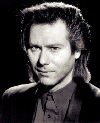- Warren Cann
Infobox Musical artist
Name = Warren Cann

Img_capt =
Img_size = 100
Background = musician
Birth_name = Warren Reginald Cann
Alias = Warren Cann
Born =20 May 1950
Died =
Origin = Victoria,British Columbia ,Canada
Instrument = Drums
Genre = New Wave,Synthpop ,Glam Rock
Occupation = Musician (retired), actor
Years_active = 1973–circa 1990
Associated_acts =John Foxx , Tiger Lily, Ultravox,Zaine Griff , Helden,Huw Lloyd-Langton Group
URL =
Notable_instruments = Ludwig drums (John Foxx era Ultravox) [ [http://www.discog.info/ultravox-interview5.html ULTRAVOX - THE STORY Pt 5] ]
Zildjian cymbals (John Foxx era Ultravox) [ [http://www.discog.info/ultravox-interview5.html ULTRAVOX - THE STORY Pt 5] ]Warren Reginald Cann (born
20 May 1950 ,Victoria, British Columbia ,Canada ) is adrummer anddrum machine programmer, best known as a member of the British New Wave bandUltravox .Biography
When he left Canada for England in the 1970s, established himself in London, where formed his first band along
Huw Lloyd-Langton , futureHawkwind member, on guitar andRob Rawlins , later inOvernight Angels , on bass. By 1974, he intented to join Sparks, but only he got an interview with their leaders, the brothers Ron andRussell Mael . Shortly afterwards, the same year, contacted withDennis Leigh (now known as John Foxx), who invited to add his fledgling band Tiger Lily (then only formed by Leigh, bassistChris Cross and guitaristStevie Shears ), joning. In 1976, Tiger Lily name changed to Ultravox!, and later in 1978 to Ultravox.His tenure with Ultravox lasted until 1986, when he was fired from the group. In retrospect, singer/guitarist
Midge Ure (who replaced John Foxx in 1979) considers the firing unjust, unwarranted, and a result of misplaced tensions, according to his autobiography. ["If I Was... The Autobiography", by Midge Ure, Virgin Books] Ure also describes Cann at the time as an avid gun enthusiast who frequently slept late.Cann also worked with
Zaine Griff andThe Buggles , and formed in the 1980s a band called Helden withHans Zimmer . One of his post-Ultravox bands wasHuw Lloyd-Langton Group , with theHawkwind member.Cann currently lives in Los Angeles,
California .Technical innovations
Cann and his technicians were among the first to modify commercially available rhythm units or
drum machine s, so they could alter and override the preset manufacturer programs. This is notable on "Hiroshima Mon Amour ", from thealbum "Ha!-Ha!-Ha! ". When Ultravox were recording "Vienna", Cann's electronic ventures would become important for the Ultravox sound. The acquisition of aRoland CR-78 proved something of a headache for Cann, as he saw great sonic potential in it, but it had limited pattern programmability. In the process of adding some much needed practical customisations to the CR-78, Cann became something of apersona non grata at the Roland headquarters in the UK. This did not stop Cann from carrying out his plans, and the result proved to be a key factor in the overall sound of their signature hit song "Vienna".The initial reaction to the usage of drum machines led to bewilderment among the audience, who wondered what Cann was doing during some songs. Among claims that he was doing nothing, he decided to equip his drum machines with clear perspex cases instead of wood panels, and mount a variety of LEDs inside them as a feature Cann himself described as "absolutely useless, but very impressive looking on a darkened stage; now it would be obvious I was actually doing something." (From Jonas Wårstad's interview at Discog)
In addition to his drum machine work, Cann designed several modifications for bass player
Chris Cross 'Minimoog , among them a primitive sequencer made from a series of toggle switches to addsyncopation to the synthesizer's ability to create a stream of eighth notes, and a proprietary triggering system that allowed Cann and Cross to synchronise the Minimoog with Cann's drum machines, a feat performed almost three years before MIDI was officially introduced in 1983. According to Midge Ure's autobiography, when the Minimoog took a dump on tour, Ultravox borrowed one from The Cars, but it didn't help as it lacked the proprietary modifications.Playing style
Cann made significant contributions to the drum sounds of
New Wave music , both in style and execution. Around 1978, when Ultravox released the "Systems of Romance " album, Cann's style of drumming turned away from its rock roots and toward what was becoming the New Wave sound. He endeavoured to have extremely precise timing; this would make the songs with live drums match songs driven by electronic, programmedpercussion . For an example of this, compare the song "Sleepwalk", where Cann plays live drums, to "Mr. X", where the drums are sequenced. Both of these tracks can be found on "Vienna". Despite his machine-like timing, Cann would often do things that neither drum machines nor electronically sequenced percussion could do at the time. Specifically, he would often play very precise triplet fills andcrescendo s, especially on thesnare drum . While these two techniques are easily accomplished by electronic instruments today, around 1979-1982 they were virtually impossible. In essence, it could fool the listeners to believe they were hearing a drum machine, only to prove them wrong through out-performing the rather rudimentary sequencing possibilities of the time.From a technical perspective, Cann preferred a
traditional grip . On the "Quartet" album and subsequent tour (1982), Cann employed several sets ofSimmons SDS-V electronic percussion pads, even to the point where he had an extra kit consisting of the hexagonal Simmons pads, which he played standing up. This way of playing them is quite unique and Cann seemed to be using this setup for one song only, namely "The Song (We Go)" from "Quartet".Discography
With Ultravox
With Helden
References
If I Was... The Autobiography, by Midge Ure, Virgin Books
External links
* [http://www.discog.info/ultravox-interview5.html Warren Cann interview at Discog]
* [http://www.torque-point.com/index.php?page=89 Warren Cann interview at Torque Point]
* [http://www.ultravox.org.uk/history.shtml Ultravox: The Story] as told by Warren Cann to Jonas Wårstad
Wikimedia Foundation. 2010.
